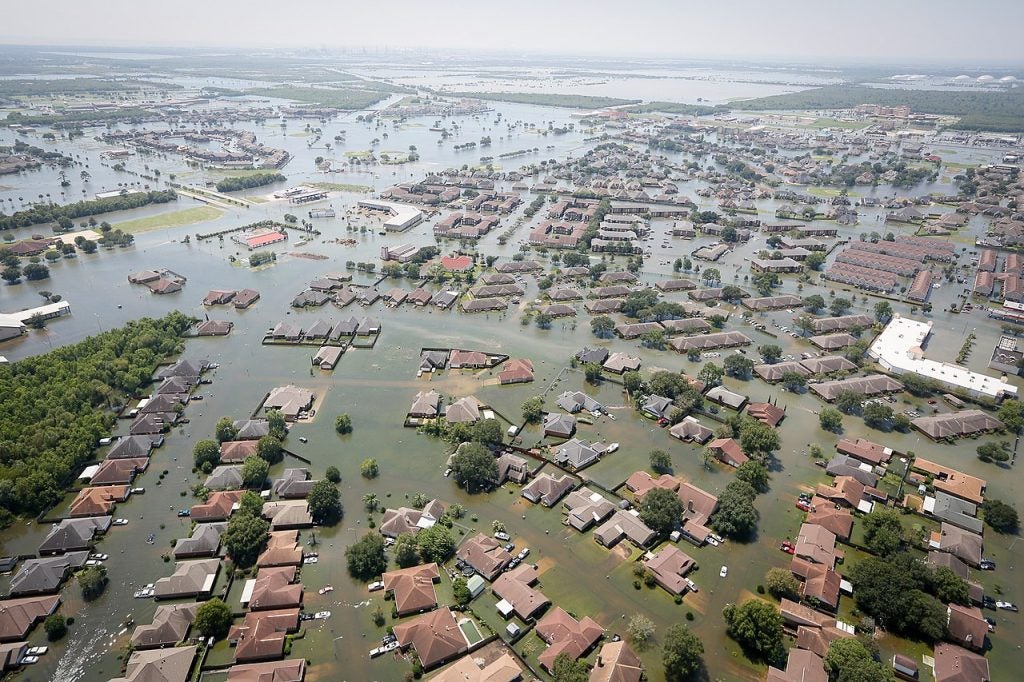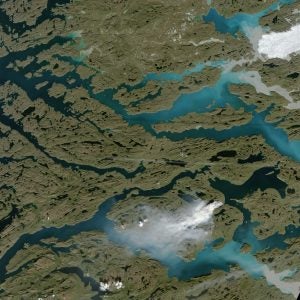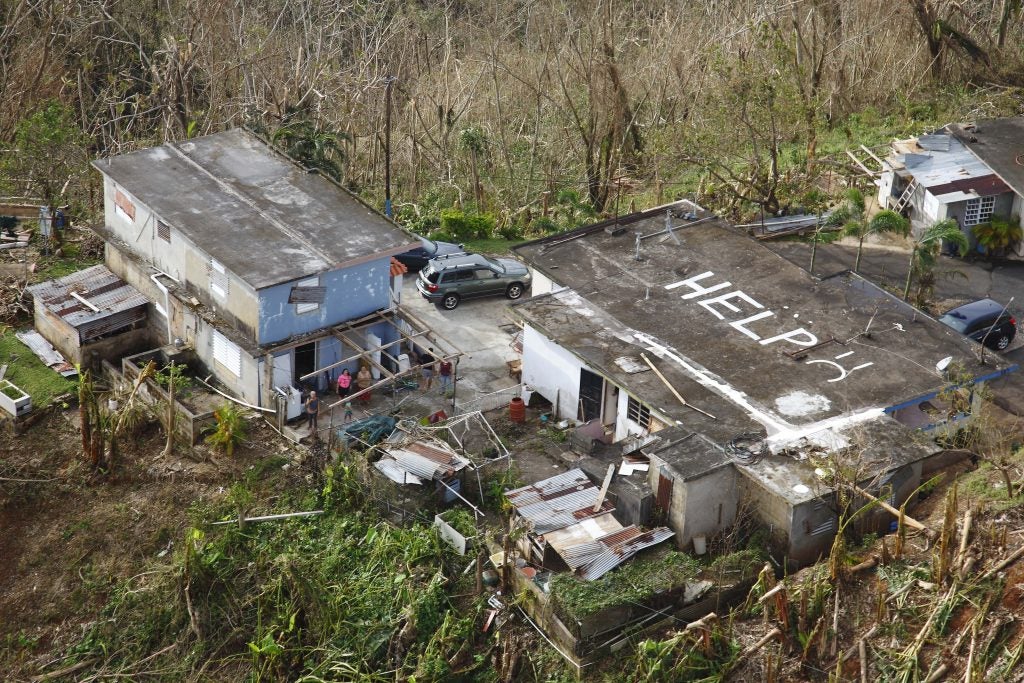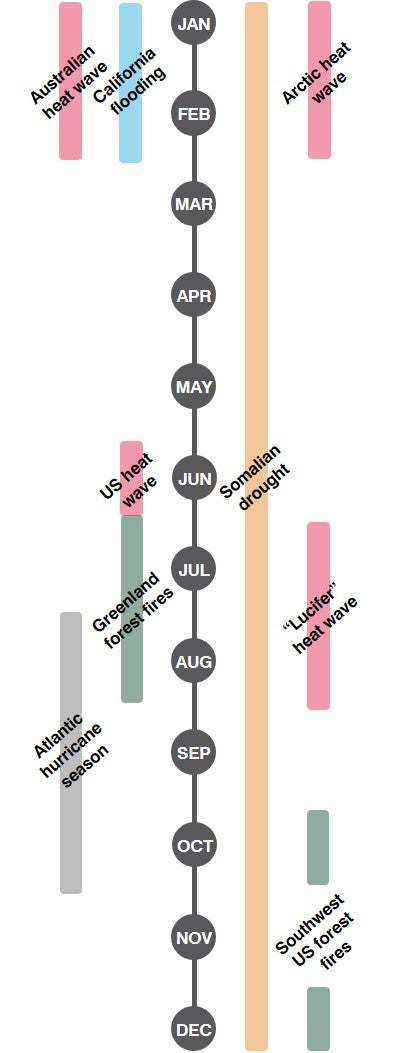From hurricanes to heat waves, 2017 produced countless headlines concerning extreme weather and the devastation left in its wake.
We tend to think of extreme weather as an unpredictable, external source of destruction. When faced with catastrophes, we don’t always recognize the role we play in intensifying their impacts.
But as human-induced climate change continues to progress, extreme weather is becoming more frequent and dangerous. Without immediate greenhouse gas mitigation efforts, last year’s unprecedented disasters may soon become the norm.
Here’s a look back at the worst weather of 2017 and how these events may have been affected by climate change (and scroll down to see a timeline of the year’s worst weather).
JANUARY
- Massive flooding drowns California – Intense rains in January provided a much needed respite from California’s longstanding drought, but quickly tipped from satiating to inundating. Within the first 11 days of the year, California received 25 percent of the state’s average annual rainfall. Flooding and mudslides forced more than 200,000 people to evacuate their homes and caused an estimated $1.5 billion in property and infrastructure damages.
The rapid shift from drought to flooding may be a marker of climate change. As temperatures warm, precipitation falling as rain rather than snow and expedited snow melt lead to the earlier filling of reservoirs. Such a shift increases the likelihood of both summer droughts and winter flooding, with the latter intensified by a warming atmosphere that holds more moisture and deposits greater precipitation in heavy rainfall events.
- Heat wave sizzles in Australia – High heat persisting overnight in the New South Wales and Southern Queensland regions of Australia induced a series of devastating heat waves throughout January and February. Following a record-setting month in which the city reached its highest ever overnight minimum temperature for December, Sydney experienced the hottest night in January since weather records began in the mid-1800s.
Analysis has shown that these extreme summer temperatures are 10 times as likely due to the influence of climate change. With rising global temperatures, heat waves are expected to become more intense, frequent, and longer lasting. Australia was just one of many regions to experience these developing changes in 2017.
- Extreme heat melts the North Pole – Recent history of escalating temperatures in the Arctic could not dull the shock when temperatures near the North Pole reached more than 50 degrees Fahrenheit above regional averages this winter. The heat wave associated with this spike is not only dramatic in intensity, but frequency – heat this extreme usually occurs about once each decade, yet this event was the third recorded in just over a month.
There exists an essential feedback between sea ice melt and Arctic warming – the more we warm, the more ice melts, lowering the region’s reflectivity of sunlight and increasing warming intensity. While these processes are usually gradual, weather variability can kick dramatic warming events into high gear. The winter heat waves experienced in the Arctic provide examples of such a combination, which may occur every few years should we reach a 2 degree Celsius global temperature rise.
FEBRUARY
- Drought brings risk of famine to Somalia – At a time when a staggering 6.2 million people – half of Somalia’s population – required urgent humanitarian aid, the World Health Organization released an official warning that Somalia was on the verge of famine. Such categorization would clock in as Somalia’s third famine in 25 years, the most recent of which led to the death of 260,000 people.
After years of scarce rainfall, the nation continues to face widespread food insecurity, reduced access to clean water, and increased risk for drought-related illness. Analysis of both observational and modeling data suggests that only a small increase in the nation’s dry extremes can be attributed to climate change. However, as dry regions become progressively drier in a warming climate, similar national disasters may become increasingly common.
JUNE
- Extreme heat blisters the Southwestern United States – In June, an intense heat wave blazed across the Southwestern U.S. and left record high temperatures in its trail. Daily records included 127 degrees Fahrenheit in Death Valley. All-time records were reached in Las Vegas, Nevada and Needles, California at 117 degrees Fahrenheit and 125 degrees Fahrenheit, respectively. High heat triggered public health concerns and led to power outages in the California Central Valley, the buckling of highways in West Sacramento, and the cancelation of 50 flights out of Phoenix Sky Harbor Airport for American Airlines alone.
While high temperatures are typical of the low-humidity pre-monsoon season in the Southwest, the unprecedented magnitude of these numbers and the shift towards an earlier extreme heat season may be a signal of the changing climate.
JULY
- Once-icy Greenland engulfed in flames – In historically icy Greenland, wildfires have typically been of minimal concern. As a result, when the largest wildfire in the country’s history broke out at the end of July, there existed virtually no framework to assess the event’s health and infrastructure risk.
As global temperatures rise and Greenland’s ice melts, the once barren landscape can fill with vegetation and expand the likelihood of forest fire outbreak. Climate change simultaneously lengthens and intensifies drought in the region, while increasing the likelihood of thunderstorms (a major catalyst of wildfires). Wildfires in turn intensify regional warming, as the fires’ soot deposits black carbon on the pristine snow cover, reducing the region’s reflectivity and accelerating ice sheet melt.
- “Lucifer” plagues Europe – Europe’s most sustained extreme heat event since the deadly 2003 heatwave (in which climate change was responsible for half of the 1050 recorded deaths) brought temperatures so reminiscent of the Inferno that locals named the event “Lucifer.” As temperatures throughout the region surpassed 104 degrees Fahrenheit, two deaths were recorded and a 15 percent increase in hospital emergency emissions was observed in Italy. The heatwave also caused pollution levels to soar and spurred wildfires throughout Portugal, just a few months after fires in Pedrógão Grande killed 60 and injured more than 250.
Research concerning previous extreme heat in Europe has shown that climate change renders the maximum summer temperatures observed in regions such as Spain 500 times more likely than in the pre-industrial era. As global temperatures continue to rise, extreme heat will only become more familiar.
- Southeast Asia inundated by widespread floods – More than 41 million people were affected by massive floods and landslides that rippled through nations including Bangladesh, India, and Nepal. Losses experienced by the region included more than 1,300 lives and the displacement of 600,000. Two simultaneous pressures – the push for urbanization and neglect towards developing sustainable draining systems – renders the region highly vulnerable to these natural disasters.
The link between the Southeast Asian monsoon season and climate change is complex, dependent upon a variety of entwined weather systems and intricate regional topography. More study is necessary to predict the influence of a changing climate on this monsoon system in order to prepare the region for impact and increase communities’ resilience.
AUGUST
- Atlantic hurricane season leaves devastation in its wake – Deadly storms Harvey, Irma, Maria, and Ophelia dominated the news in August, killing more than 150 people and causing more than $300 billion in damages in just the United States.
As the atmosphere holds seven percent more moisture with each one degree Celsius temperature rise, individual tropical storms can now deposit more rainfall. Recent studies have estimated that climate change rendered Harvey’s extreme rainfall three times more likely and 15 percent more intense. 27 trillion gallons of rain fell over Texas and Louisiana from Hurricane Harvey alone, setting the record for the highest tropical cyclone rainfall in the continental US. Sea level rise of 10 to 12 inches in cities such as Miami dramatically increased the destruction caused by the storm surges associated with Hurricane Irma, which were as high as 10 feet. Warming waters driving hurricane development and strength ushered in Hurricane Maria – Puerto Rico’s strongest storm in 85 years – and Hurricane Ophelia, which set records for the farthest east a major hurricane has traveled in the Atlantic and the worst storm in history to make landfall in Ireland.
OCTOBER
- Western United States’ forests set ablaze – Wildfires devastated Northern California this October, with more than 245,000 acres burned and 14,000 homes destroyed. Insured losses in the region amounted to more than $3 billion, but danger does not end when the fires are extinguished. The remaining ash and debris (including hazardous waste, electronic waste, and heavy metal contamination) can be spread by wind and rain, posing even further health concerns to those nearby. The increased temperatures and decreased water availability associated with climate change increases the risk of wildfires. Due to recent temperature and dryness extremes in California, even engine heat from parked cars has been cited as the source of major fires.
The duration of the fire season has also begun to lengthen, as spring and summer temperatures rise and snowmelt begins earlier. California wildfires ignited once again in December outside of Los Angeles, creating even more destruction than those in the north. Covering an area of more than 425 square miles and displacing more than 100,000 people, the Thomas fire ranks as the second largest fire in the state’s history. While dryness and high temperatures triggering the fire’s outbreak are associated with La Niña’s current presence in the region, climate change serves to exacerbate both conditions and facilitate the dramatic losses experienced by California residents.
The direct influence of climate change on many of these events suggests that more devastating catastrophes lie ahead. But the future is not written in stone.
Should we recognize the intensification of these extreme weather events, the power to decrease greenhouse gas emissions worldwide and prevent increasingly hostile weather remains in our hands.














2 Comments
Casey, the power for EDF to stop ignoring the carbon-free contribution of nuclear energy, at the behest of its fossil fuel sponsors, lies in your organization’s hands only.
This photo of a Puerto Rico solar farm after Maria was missing from your gallery:
http://www.thorium-now.org/images/puerto_rico_solar.jpg
There are at least a few good things that happened this year:
Jose was supposed to hit the New England area but it never did. Instead of slamming into Manhattan as a Cat 2 or 3, it fell apart & dissipated, thankfully.
The weird low over the North Pole hung over it all summer long, saving a much bigger ice melt from occurring.
Greenland gained ice for the first time in 20 years, which was a surprise.
Then there is this rainy weather that made Alaska have it’s first normal Summer in 20 years, after normalized snow & cold last winter. Nice!
So, it could be worse, but there are some good things too. I watch for those!